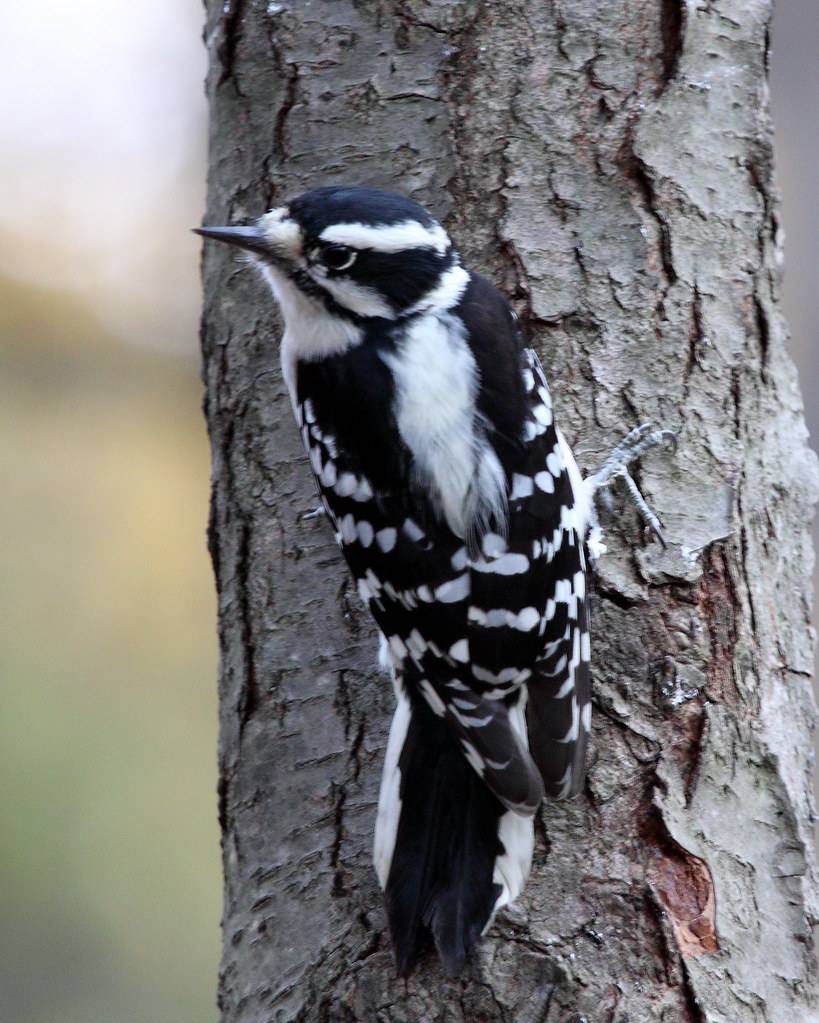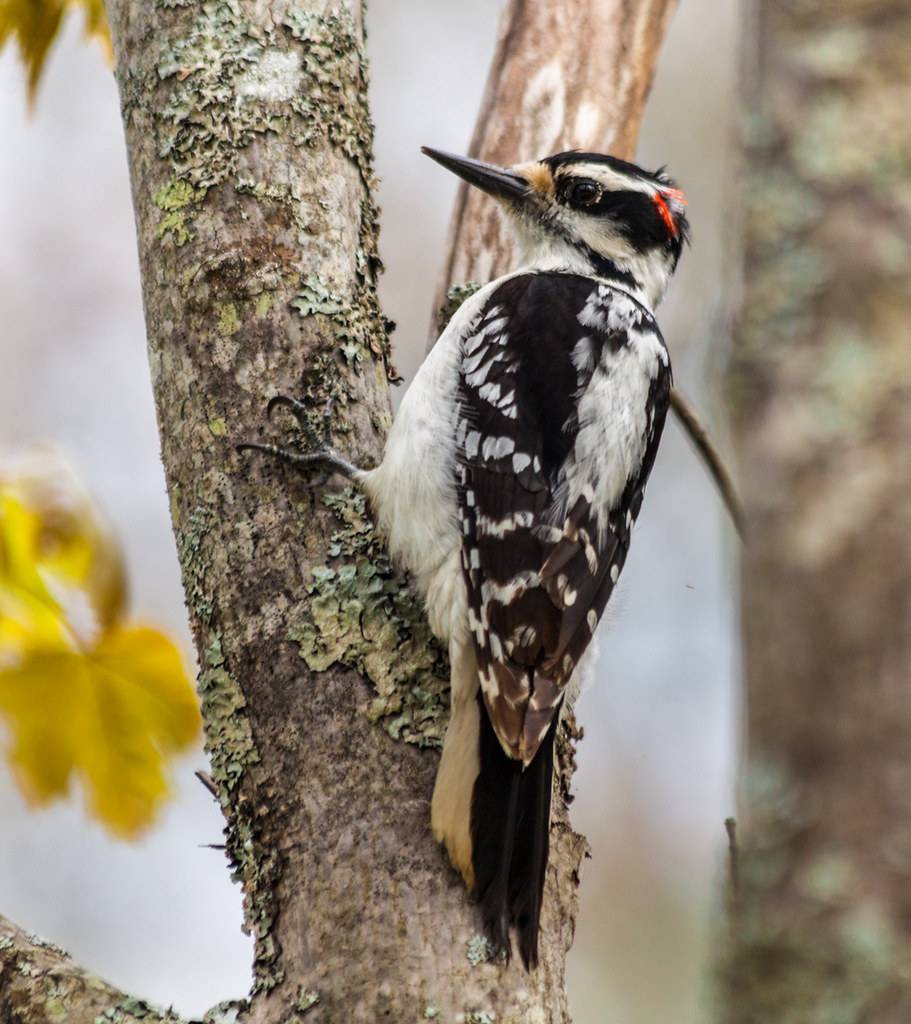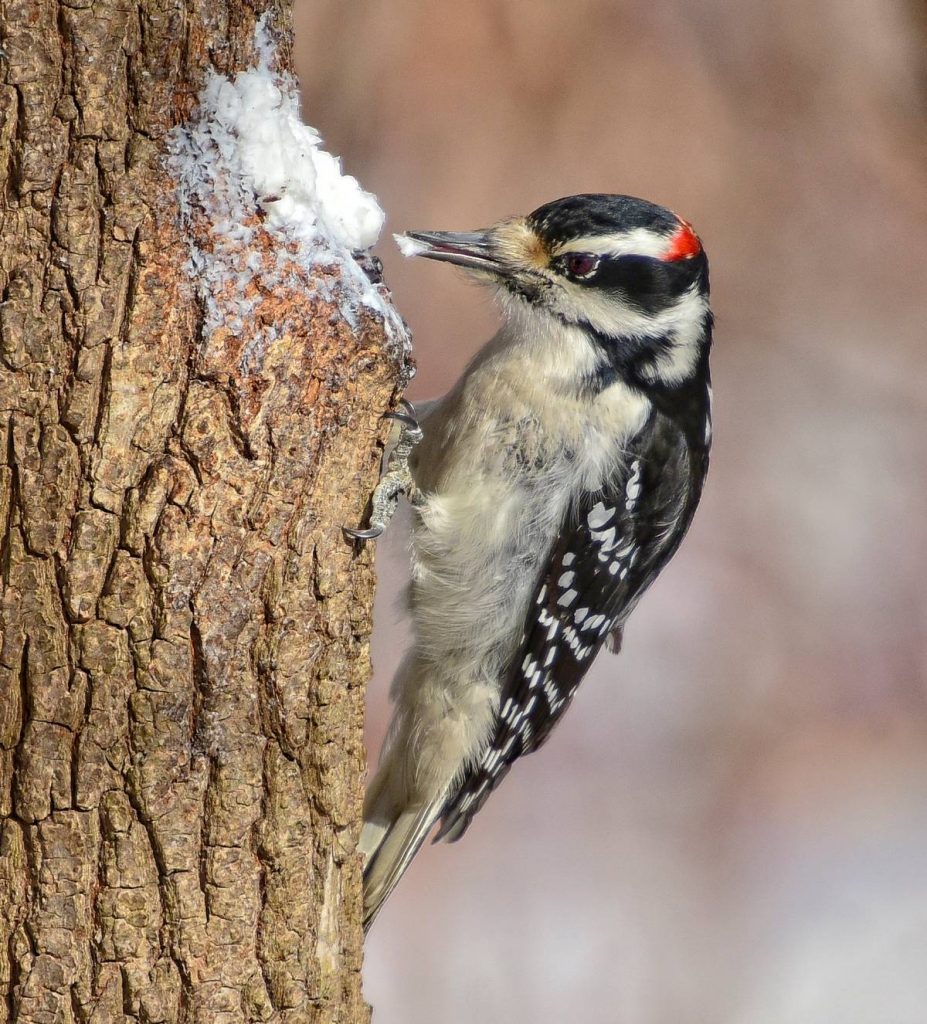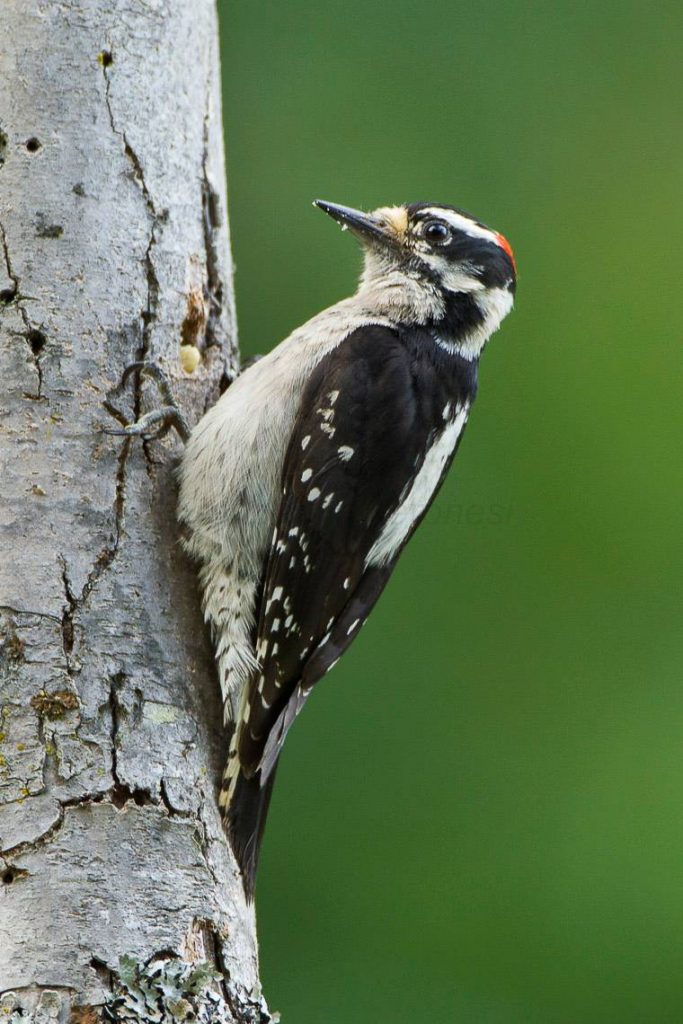While far from unique in the family of woodpeckers, the hairy woodpecker (which bears a striking similarity to the downy woodpecker in plumage and general appearance, differing primarily in the shape and size of the bill) is a fascinating specimen all the same.
Categorized as a “medium-sized” woodpecker, the hairy woodpecker (Leuconotopicus villosus) on average comes in at about 18 to 26 cm (approx. 7 to 10 in.) in length and 33 to 43 cm (approx. 13 to 17 in.) in wingspan, averaging at the higher end of each such measurement. Weight range is in the area of 40 – 95 grams.
An attractive bird with a relatively simple white/black/red color scheme, the hairy woodpecker is denoted by a lengthy white patch running down the back, with additional white marks in the form of spots on the wings, feathers and, occasionally, the throat and the belly, though these last are often unmarked and trend to more of a brownish tone. Outer tail feathers are typically solid white. Adult males boast a red patch on the head, sometimes bisected by a line of black, though the females have no such coloring. Maturing males will on occasion have more of an orange tint to the head color. Certain minor variations often assert themselves by region as well.
The hairy woodpecker can be found most commonly in densely-wooded deciduous forests but–not a species to be pinned down–has also been known to inhabit coniferous forests, and occasionally more sparse forest areas altogether. Hairy woodpeckers reside everywhere from the sea level to the tree line. Once they’ve chosen a home, they tend to stay put. While migration isn’t unheard of, with those in the far north sometimes migrating south a short distance, they are typically non-migratory. They can be seen in the lower regions of Canada and throughout the United States (including Glacier National Park) and Central America, as well as in the Bahamas and the Turks and Caicos Islands.
The hairy woodpecker subsists primarily on insects such as beetles, caterpillars and millipedes, but has also been known to eat nuts, fruits and berries and to drink tree sap. Insects, however, make up about 75% of their diet. Trees are their main feeding ground, and they forage routinely there, finding insects on which to feed under the tree bark.
Not content to restrict their efforts to the forest, though, the birds will often peck the sides of wooden homes in an attempt to locate bugs for a meal there as well. One particularly common victim of the hairy woodpecker is the European corn borer, a moth that bedevils U.S. farmers at a cost of greater than $1 billion each year in lost crops and efforts to combat the same. (Presumably, most farmers will be willing to tolerate a little unwelcome pecking on their window frames if it’s accompanied by the benefit of a thinning of the corn worm population.)
The call of the hairy woodpecker is probably best described as piercing; it is characterized a sharp “peek” that is sometimes chirped in succession as a whinny of descending tones. If induced to fight, it will launch into a series of shrill cries. Drumming from the hairy woodpecker consists of about 25 taps in a single second.
A firm believer in maintaining its own space in a relationship, the hairy woodpeckers tend to separate along gender lines in early winter, with males and females establishing separate nests. They will pair up again (in the female’s nesting area) in the middle of the season, often, but not always, with the same mate from the prior year, and will excavate a spot in the trees together.
The birds drum in tandem as part of a courtship ritual and nest together anywhere from 4 to 60 feet above the forest floor. Mating results in one brood per year, usually with four white eggs. Incubation is a team effort, with the male handling duties in the night and the female in the day for a period of about two weeks. Once hatched, the birds are tended to by both parents, with both feeding the nestlings. The male may do so more infrequently since he typically forages further from the nest. After about a month, the young begin leaving the nest, though the parents continue to feed them for a short time still.
Populations of the birds are robust, and their conservation status is classified as being of “least concern.” That said, population declines have been observed in certain areas, believed to be owing largely to forest fragmentation and the disappearance of old-growth forests marked by little disturbance. Competition for nesting with European starlings is another factor.
The longest-lived hairy woodpecker observed was nearly 16 years old. This was in captivity; in the wild, lifespans tend to be considerably shorter. The hairy woodpecker is common to backyards, and can even be induced to pay a visit. Birdfeeders containing peanuts or black oil sunflower seeds are likely to grab some attention, particularly in the winter when the birds will be harder-up to find something to eat. This is even more likely to yield good results if you have dead trees on your property, as hairy woodpeckers might then judge your yard, with its ample food and favorable background, a good place to begin their bird-family!
If you can turn your yard into an appealing spot for them, your odds of being able to observe this bird long-term will improve greatly.






